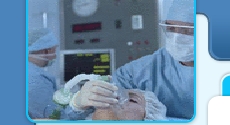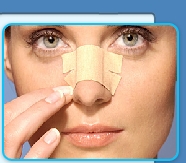 | ||||
|
  |
||
 |
||
|
1. What is rhinoplasty?Rhinoplasty is cosmetic or reconstructive surgery of the nose. It is also known as nasal refinement and is often called a nose job. A rhinoplasty can correct many problems of the nose stemming from genetics, trauma, or disease and can fix many aesthetic problems as well. A hump may be removed to give a more pleasing, symmetrical look. The cartilages of the nose can be molded and trimmed to create a more compact or pleasing shape. Rhinoplasty can refine the nose and bring balance and harmony to the face. Back to Top2. At what age can rhinoplasty surgery be performed?In general, rhinoplasty for purely cosmetic reasons should be avoided before the face and nose have completed most of their growth. For most people, this means that they should put off surgery until the middle or late teens. Back to Top3. What does a typical rhinoplasty consultation entail?A plastic surgery consultation is your chance to meet with him and her and discuss what you want out of your rhinoplasty surgery. Your doctor will discuss your goals with you and will explain what can be achieved realistically. Back to Top5. What should I expect postoperatively?For the first day after your rhinoplasty you will not feel well. After your surgery your surgeon will have placed a dressing over your nose and a gauze pad underneath it to catch blood and secretions. You will be told when you can remove the dressing, but usually you can do this in a few hours. You will feel a bit sore and headachy for a day or two, and your nose will be tender. Because the back of your nose connects to your throat and stomach, you may have swallowed some blood during the surgery. This can cause nausea, as can anesthesia, and you may vomit a black-looking mixture within a few hours of surgery. Usually, nausea subsides after you throw up. If you continue to vomit and/or run a high fever, contact your doctor immediately. You may have some discomfort from the packing and cast on your nose. Some patients feel claustrophobic and feel that they cannot breathe. When the cast is removed, you might feel some pain during the removal. You will need to sleep with your head elevated for several days to a week after your surgery. Bruising and swelling will be present for several days after surgery and your nose will be sensitive for about a month and a half during your rhinoplasty recovery. Back to Top6. When will I be able to see the results?Your nose is going to look swollen and bruised for at least a few days. The swelling starts to disappear about a week after the cast is removed or a week after surgery. About 80% of the swelling and all of the discoloration are usually gone by 2 weeks after surgery. Swelling starts to resolve more slowly after that. Ninety percent of the swelling is gone by 2 months after surgery and the rest slowly disappears over the next year. Back to Top7. What are the risks of rhinoplasty?Rhinoplasty is generally safe, but things can go wrong. There is the risk of infection, adverse reaction to the anesthesia, and excessive bleeding. Even when a highly skilled surgeon performs your surgery, sometimes your body may not heal correctly or have adverse reactions causing undesired results. If is possible that you will need additional surgery. Visible scarring is usually minimal if the incisions are made inside of the nose, but if an open technique is used, or if narrowing of the nostrils is desired, scars may be visible for some time. You may also simply be unhappy with the results. Rhinoplasty has the highest rate of revision of cosmetic surgery. Back to Top |
||
 |
 |
 

|
|
|



















